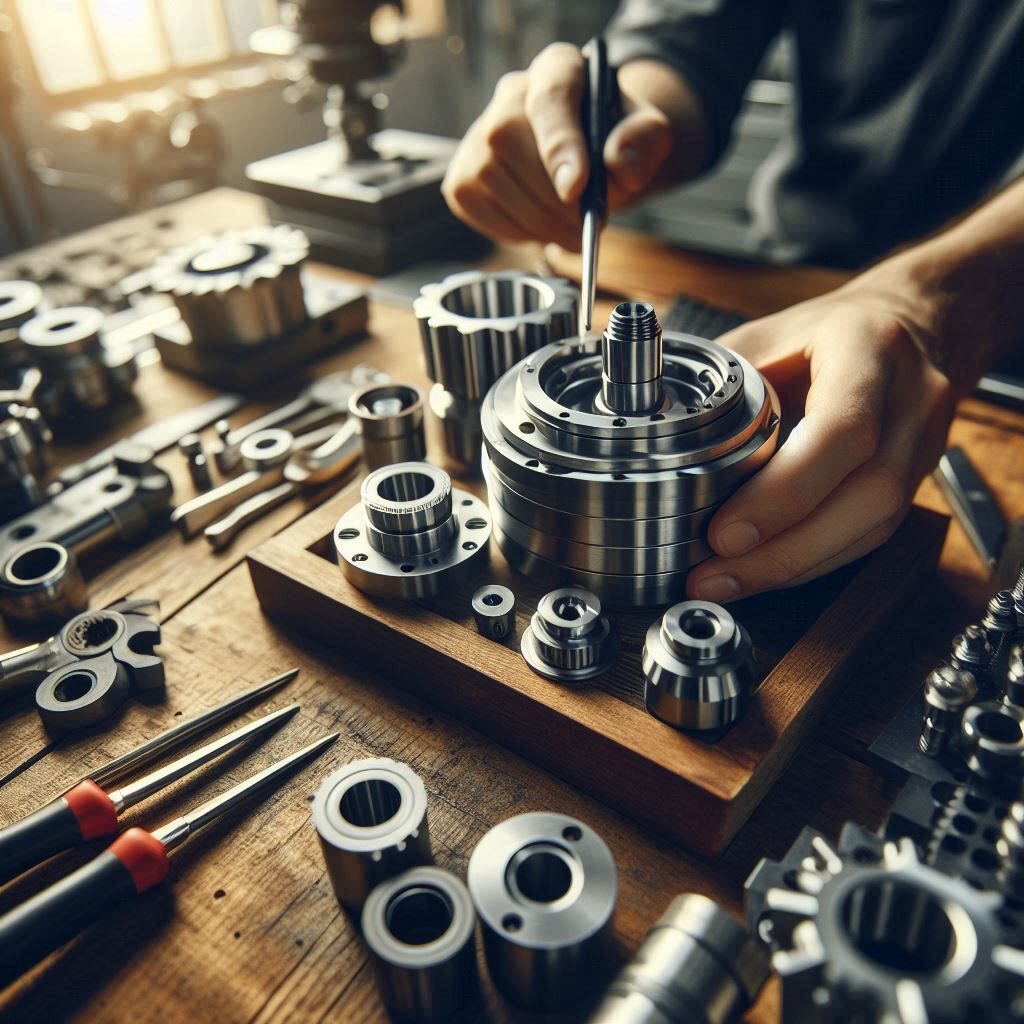Machined parts assembly is the process of integrating precision-engineered components—typically produced through methods like CNC machining, turning, or milling—into a functional whole.
This process is crucial in industries such as aerospace, automotive, robotics, and medical devices, where high precision and reliability are paramount.
Key Steps in Machined Parts Assembly
- Component Preparation: All machined parts undergo thorough cleaning and inspection to ensure they meet specified tolerances and are free from defects.
- Sub-Assembly: Smaller components are assembled into sub-assemblies, focusing on fit and function before full integration into the main assembly.
- Main Assembly: Sub-assemblies are integrated into the main structure, ensuring proper alignment and fit. This step often involves fastening methods such as screws, bolts, or welding.
- Quality Control: The final assembly undergoes rigorous quality checks, including functionality tests, dimensional accuracy, and overall product performance, ensuring it meets all specifications.
Common Assembly Techniques
- Mechanical Fastening: Utilizes screws, bolts, or rivets to join components, allowing for disassembly if necessary.
- Welding: Fuses components together using heat, providing a permanent bond suitable for high-stress applications.
- Bonding: Employs adhesives to join parts, offering uniform stress distribution and aesthetic finishes.
- Press Fit: Involves inserting a component into a hole with slightly smaller dimensions, relying on friction for a secure fit.
Benefits of Machined Parts Assembly
- Precision and Reliability: Ensures components fit and function as intended, which is critical in high-performance applications.
- Customization: Allows for the integration of various materials and components to meet specific design requirements.
- Efficiency: Streamlined assembly processes can reduce production time and costs.
- Quality Assurance: Rigorous testing and inspection protocols ensure the final product meets industry standards.
Industries Utilizing Machined Parts Assembly
- Aerospace: For assembling critical flight components requiring high precision.
- Automotive: In the production of engine parts, transmission systems, and safety components.
- Medical Devices: For creating instruments and implants that must meet stringent regulatory standards.
- Electronics: In the assembly of enclosures and internal components of electronic devices.
Please visit our pages CNC Turning Parts、CNC Milling Parts、CNC Machined Parts
